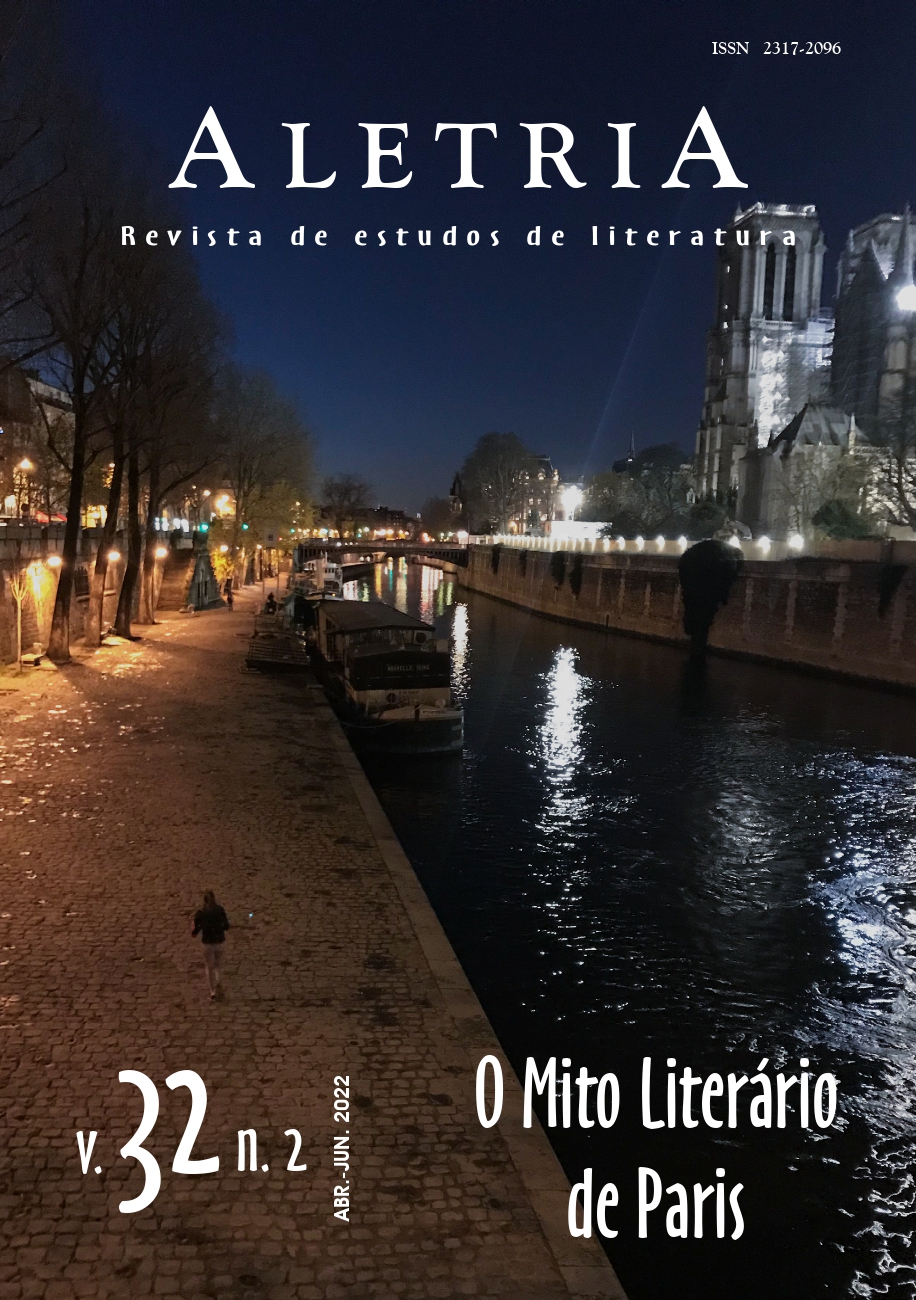An Attic in front of Père-Lachaise. After the Winter of Guadalupe Nettel
DOI:
https://doi.org/10.35699/2317-2096.2022.36957Keywords:
Nettel, myth, Paris, symbol, culture, deathAbstract
Guadalupe Nettel picks the city of Paris to find his reason for living; his excuse for his personal and cultural extensive journey replicates a part of the author’s biography. The decision to create characters who live the “city of light” experience surges and reiterates a vital, spiritual and formative necessity, amongst those artistic and intellectual migrants who have traveled there to fulfill a rite as enigmatic, as it is real. Within this novel, we can also find a reference to neighborhoods, monuments and places, such as the emblematic cemetery Père Lachaise which serves as the center of the plot. It is filled with the presence of renowned Parisian thinkers and artists whose influence is evident in writers from different affiliations and latitudes who continue to re-edit the Paris myth, an exclusive way of life, living and thinking with an international projection.
References
ARIÈS, Philippe. El hombre ante la muerte. Madrid: Taurus, 1983.
BALLÓ, Jordi. Imágenes del silencio. Barcelona: Anagrama, 2000.
BAUDELAIRE, Carlos. Pequeños poemas en prosa. Madrid: Espasa Calpe, 1968.
BENJAMIN, Walter. París, capital del siglo XIX. In: BENJAMIN, Walter. París. Madrid: Casimiro, 2015, p. 47-48.
BERMAN, Marshall. Todo lo sólido se desvanece en el aire. Ciudad de México: Siglo XXI, 2000.
CAILLOIS, Roger. El mito y el hombre. Buenos Aires: Sur, 1939.
CASANOVA, Pascale. La república mundial de las letras. Barcelona: Anagrama, 2001.
HEMINGWAY, Ernest. París era una fiesta. Barcelona: Lumen, 1964.
LANDOWSKI, Eric. La sociedad figurada. Puebla: Fondo de Cultura Económica, 1993.
NETTEL, Guadalupe. Después del invierno. Barcelona: Anagrama, 2014.
OJEDA, César. La vida privada y pública de los animales de Jean Ignace Isidore Gérard. Odisea 2008, [s. l.], 10 fev. 2009. Disponible en: http://www.odisea2008.com/2009/02/la-vida-privada-y-publica-de-los.html. Consultado en: 30 sept. 2021.
OLLÉ-LAPRUNE, Philippe. Los escritores vagabundos. Ciudad de México:Tusquets, 2017.
PEREC, Georges. Lo infraordinario. Galicia: Impedimenta, 2008.
PONIATOWSKA, Elena. Flor de lis. Ciudad de México: Era, 2013.
RESINA, Joan Ramon (ed.). Mythopoesis: literatura, totalidad, ideología. Barcelona: Anthropos, 1992.
RICŒUR, Paul. Tiempo y narración I. Ciudad de México: Siglo XXI, 1998.
SAMOYAULT, Tiphaine. El concepto de vida en la teoría literaria. Cuadernos Lirico, [s. l.], v. 20, p. 1-9, 2019.
SÁNCHEZ, Guillermo. Entrevista: “Guadalupe Nettel, mirar desde el cuerpo”. Gatopardo, [s. l.], 24 jan. 2019. Disponible en: https://gatopardo.com/reportajes/guadalupe-nettel/. Consultado en: 20 ago. 2021.
TRIBECA. Civitatis, Nueva York, 2000. Disponible en: https://www.nuevayork.net/tribeca. Consultado en: 30 mayo 2021.
VILA-MATAS, Enrique. París no se acaba nunca. Barcelona: Anagrama, 2003.
Downloads
Published
Issue
Section
License
Copyright (c) 2022 María Esther Castillo García (Autor)

This work is licensed under a Creative Commons Attribution 4.0 International License.
Authors who publish with this journal agree to the following terms:Authors retain copyright and grant the journal right of first publication with the work simultaneously licensed under a Creative Commons Attribution Non-Commercial No Derivatives License that allows others to share the work with an acknowledgement of the work's authorship and initial publication in this journal.Authors are able to enter into separate, additional contractual arrangements for the non-exclusive distribution of the journal's published version of the work (e.g., post it to an institutional repository or publish it in a book), with an acknowledgement of its initial publication in this journal.Authors are permitted and encouraged to post their work online (e.g., in institutional repositories or on their website) prior to and during the submission process, as it can lead to productive exchanges, as well as earlier and greater citation of published work (See The Effect of Open Access).





